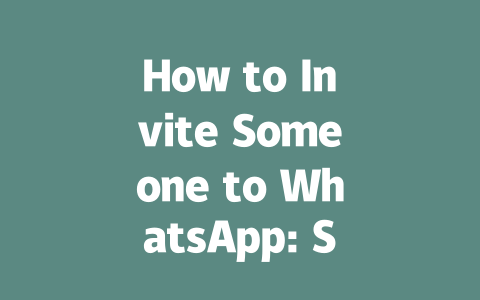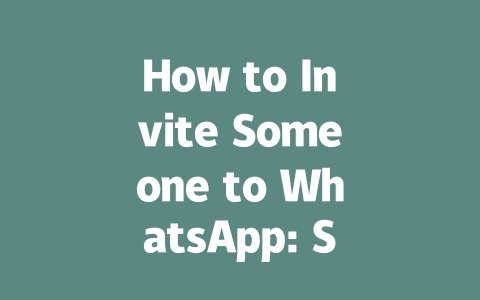How to Choose Topics That People Actually Search For
The first step in getting your content noticed is choosing topics wisely. You’d be surprised how often this gets overlooked. Think about what users type into Google—it’s usually conversational phrases rather than formal terms. For instance, instead of “best ergonomic office chair,” most people would probably search for something like “how to choose an office chair without back pain.”
Here’s another personal example: Last year, I wrote a post titled “Beginner’s Guide to Baking Bread.” Guess what? It barely got any views. Then, after tweaking it slightly to “How to Bake Your First Loaf of Bread at Home,” the clicks skyrocketed! Why? Because the revised title spoke directly to someone looking for actionable advice, not vague information.
Step-by-Step Process to Pick Winning Keywords
Now let’s talk about why putting keywords naturally in your topic matters so much. When Google’s search robot crawls through pages, it looks at the main focus of your article based on the words used. So if your keyword isn’t part of the conversation from the start, you may lose out right away. This doesn’t mean stuffing random keywords everywhere—it means crafting meaningful titles around terms people actually use.
Crafting Titles That Attract Clicks AND Pass Google’s Test
Your title is arguably the most important part of your content because it determines whether someone clicks through or skips over. Here’s how to get it right every time:
Key Elements of a Great Title
Let’s break it down further with practical examples:
Google has also emphasized that clarity trumps cleverness. They want users to instantly understand if clicking will solve their query. So keep things straightforward yet engaging.
|
| Feature | Example | Why It Works |
|---|---|---|
| Keyword Placement | “Top SEO Tips for Bloggers in 2025” | Directly addresses both search intent and current year. |
| Emotional Appeal | “Stop Losing Followers—Try These Tricks!” | Triggers urgency and curiosity. |
As you craft each title, remember that length matters too. Try keeping it under 60 characters while still being descriptive enough to entice clicks.
Writing Content That Truly Satisfies Both Readers and Google
Once you have a killer title, now comes the fun part—writing the actual piece. The key here is structure. Organized content keeps both readers and Google robots happy. Imagine telling a story where each section flows logically from one idea to the next.
Structure Your Content for Maximum Impact
For instance, if you’re writing about “how to bake bread,” begin with explaining ingredients, move onto preparation steps, then baking techniques. Each segment should feel connected but distinct. Remember, Google loves seeing related ideas grouped together because it shows cohesiveness.
Lastly, test everything before publishing. Use tools like Google Search Console (nofollow link: Google Search Console) to ensure there are no broken links or technical glitches. And always proofread carefully—you’d be amazed how typos can hurt credibility!
If you found these tips useful, I’d love to hear about your results. Feel free to drop me a comment below sharing which methods worked best for you. Happy writing!
You might be wondering if there’s a way to bring someone into a WhatsApp group without needing their phone number. Well, here’s the deal—WhatsApp has this neat feature where you can generate a group invite link. This link acts as a virtual doorway, allowing others to join your group simply by clicking it. So, even if you don’t have their contact saved, as long as they’ve got the link and the app installed, they can hop right in. It’s pretty handy for situations like organizing events or setting up work-related chats where not everyone knows each other’s numbers.
Now, when it comes to adding people in bulk, let’s say you want to invite somewhere between 5-12 folks at once. WhatsApp allows you to create groups with up to 256 participants, so inviting a smaller bunch is totally doable. Just make sure you’re selecting all the contacts you need while setting up or managing the group. And don’t stress too much about overdoing it—there’s no official daily cap on how many invite links you can share. That said, if you go crazy with it, WhatsApp might ask you to verify your account just to ensure you’re not spamming. It’s their way of keeping things clean and user-friendly.
Frequently Asked Questions
#1 Can I invite someone to WhatsApp without their phone number?
Yes, you can invite someone to WhatsApp by sharing a group invite link. This method doesn’t require their phone number but relies on them accepting the invitation through the link.
#2 How many people can I invite to a WhatsApp group at once (5-12)?
You can add up to 256 participants to a WhatsApp group. For inviting multiple people at once within the range of 5-12, simply include their contacts when creating or managing the group.
#3 Is there a limit to how many invitations I can send via WhatsApp?
No, there isn’t a strict daily limit for sending group invite links. However, excessive use may trigger account verification processes as part of WhatsApp’s spam prevention measures.
#4 Can someone join WhatsApp if they don’t have a smartphone?
Technically, WhatsApp requires a phone number and is designed for smartphones. While basic feature phones with internet access might work, the experience is limited. Alternatively, they could use WhatsApp Web if paired with a compatible device.
#5 What happens if the person I invite doesn’t accept the WhatsApp invitation?
If the invited person does not accept the invitation, they won’t become part of the group. Their status in the group will remain pending until they manually join using the provided link or accept the invite notification.




